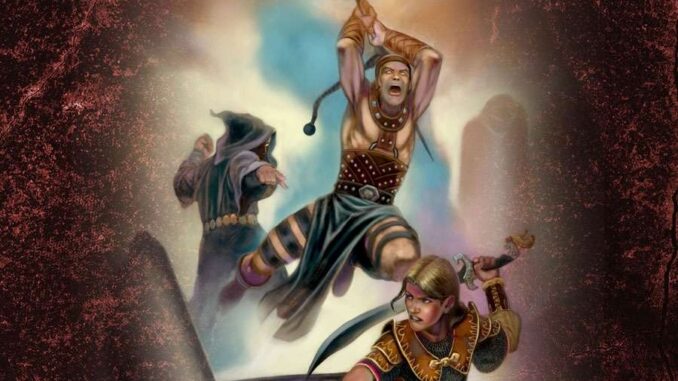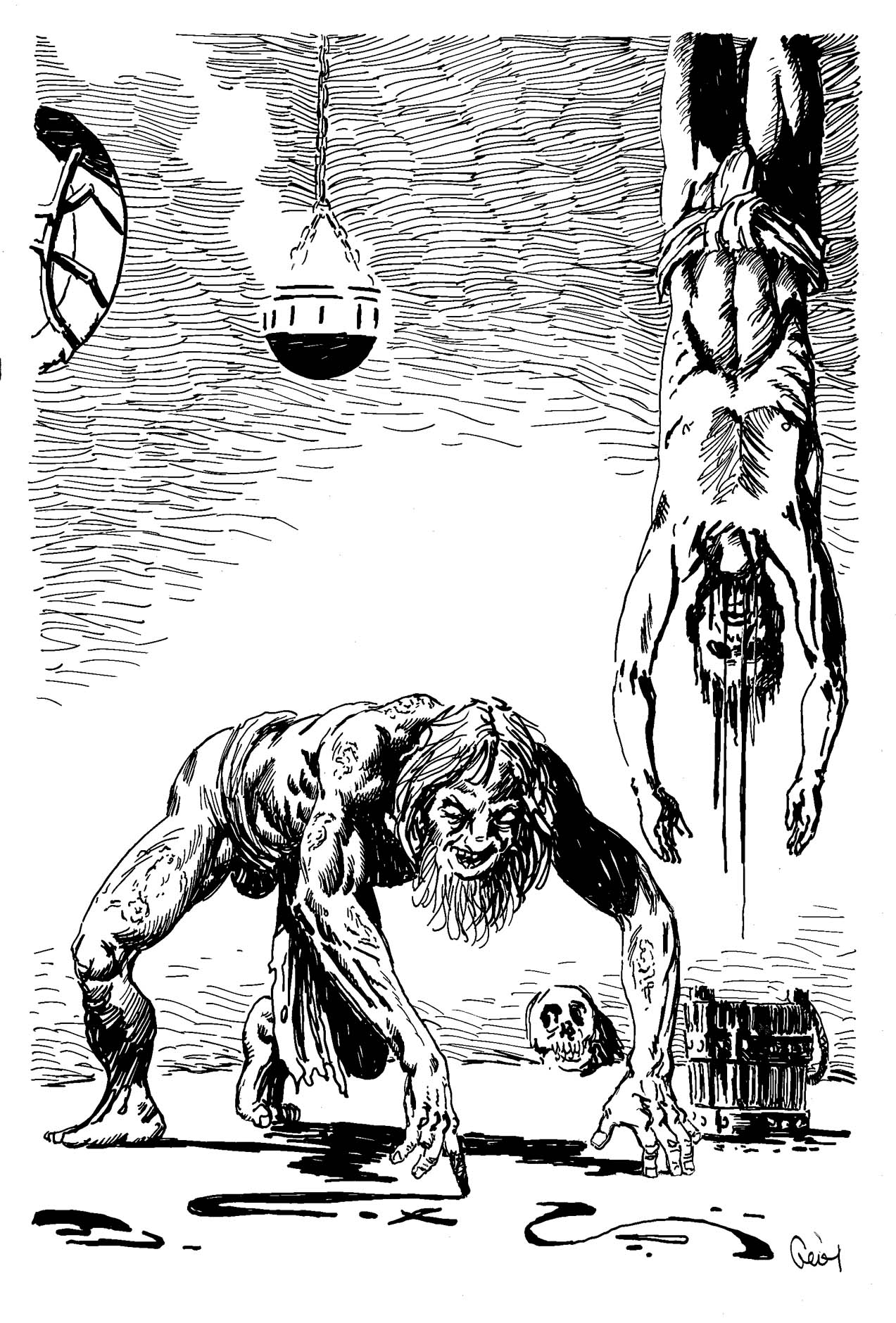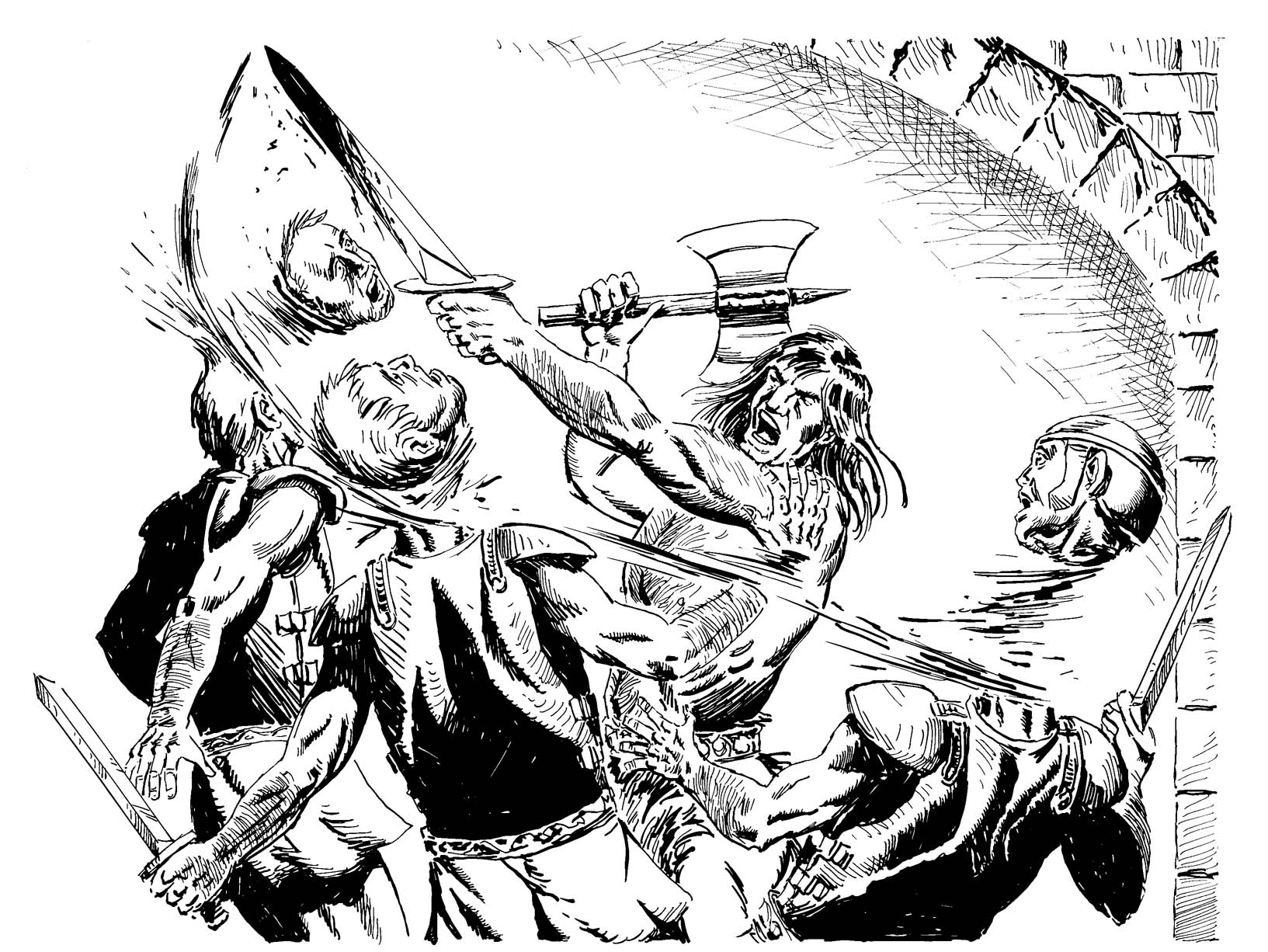
Cover Art by Eric Lofgren
© 2016 Bill Edmunds. All rights reserved.
As you may have read in previous articles of mine, I’m a fan of the Sword & Sorcery (S&S) subgenre – those personal-scale, low-fantasy tales of cunning protagonists overcoming the opposition to achieve their personal (and often self-interested) goals. Robert E. Howard’s Conan stories are probably the best known-examples. It will come as no surprise, then, that I am always on the lookout for new and interesting S&S RPGs. Today I want to share one of my most recent finds, Bill Edmund’s Red Mists: Swords Against Sorcery. It beautifully marries simple mechanics to the core tropes of the subgenre in order to give players an authentic Sword & Sorcery storytelling experience.
Core Mechanic
The core mechanic of Red Mists is extremely simple. The system uses only d6s and only PCs ever roll. Whenever a PC wants to perform an interesting action with an uncertain outcome, they compare their relevant stat value to the resistance number (difficulty) of the task. They then roll a number of d6s equal to the difference +1. Depending on whether PC’s stat value or the resistance number was higher, the PC takes either the highest or lowest result among the dice in the pool respectively. There are six possible outcomes for a test:
- Critical Failure (“No, and”)
- Standard Failure (“No”)
- Marginal Failure (“No, but”)
- Marginal Success (“Yes, but”)
- Standard Success (“Yes”)
- Critical Success (“Yes, and”)
As you may already suspect, each value is essentially a guideline for narrating the result of the roll, with the qualifiers “and” and “but” representing additional benefits or drawbacks that arise in the narrative respectively. For example, if you succeed with a roll of 4 to disarm a guard (a Marginal Success), perhaps you manage to disarm the guard, but you also put yourself in a vulnerable position, and thus subtract one die from your next action. On the other hand, if you fail with a 3 (a Marginal Failure), you may not have managed to disarm the guard, but the guard’s grip on their weapon weakens, adding a die to your next attack against them.
It’s important to note that the potential benefits and drawbacks are entirely dependent on the preferences of the group and the established stakes of a roll. It’s a very flexible mechanic that allows each group to tailor the mechanical effects of the narrative outcomes to their individual tastes.
Sword & Sorcery Flavor
As I alluded to earlier, one of the best parts of the system are the ways it ties S&S tropes to the mechanics of the game. This is most apparent in character creation. Each character consists of Themes, Attributes, and Impulses.
Themes represent the core of a character, and consist of short descriptions of your character’s profession, attitude, environment, and reputation. For example, you could be a Barbarian (Profession) from the Harsh Lands of Cimmeria (Environment) with Gigantic Melancholies and Gigantic Mirth (Attitude), who Successfully Climbed the Tower of the Elephant (Reputation). When a Theme is relevant to a PC’s test, they may add one die per relevant theme to their pool – with GM approval, of course.
Attributes, on the other hand, are similar to more traditional RPG stats, but are styled after common S&S character traits like Guile and Thews. The values of your Attributes are used to determine in part how many dice to roll when making a test.
Finally, Impulses speak to a character’s innermost desires and motivations, and include concepts like Debauchery and Plunder. Points put into each of these Impulses can be spent to reroll a single die on a test related to that Impulse.
The Skinny
Red Mists is a fun, narrative Sword & Sorcery RPG. The game masterfully pairs its mechanics to the core elements of the subgenre, allowing the group to immerse themselves in a true S&S storytelling experience. The narrative bent of the mechanics makes it easy to adapt the game to the exact sort of S&S story your group wants to tell. If you desire a game full of mighty-thewed barbarians, dastardly thieves, and sinister sorcerers, look no further – you’ll find what you’re looking for in Red Mists.
B&W Art by Earl Geier
© 2016 Bill Edmunds. All rights reserved.

B&W Art by Earl Geier
© 2016 Bill Edmunds. All rights reserved.
Do you have thoughts or questions about the article or suggestions for future content? Leave a comment below or drop me a line at jtdimino@d20radio.com.
J.T. Dimino
Latest posts by J.T. Dimino (see all)
- The PC Factory: Aedan the Druid (Old School Essentials) - January 26, 2021

